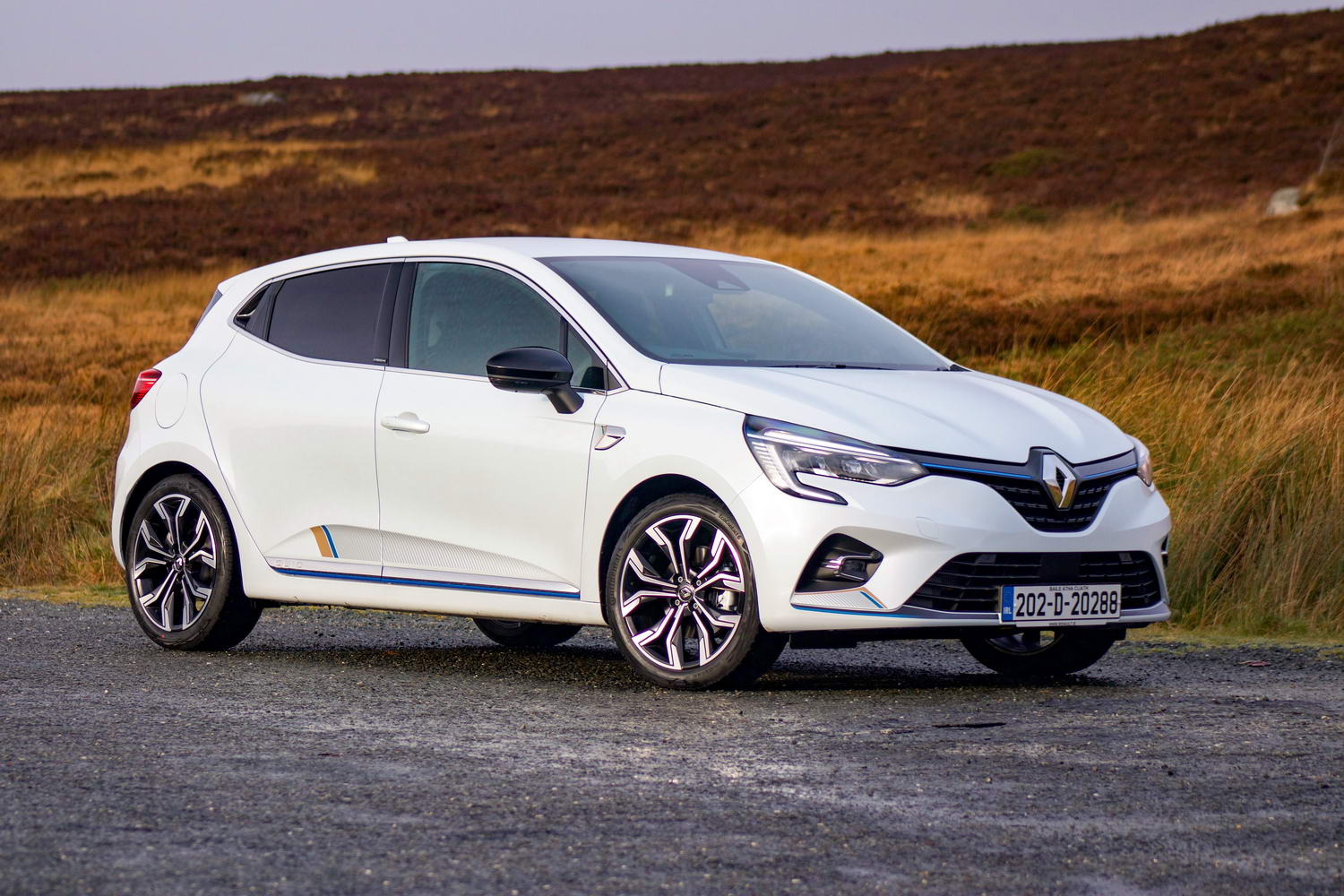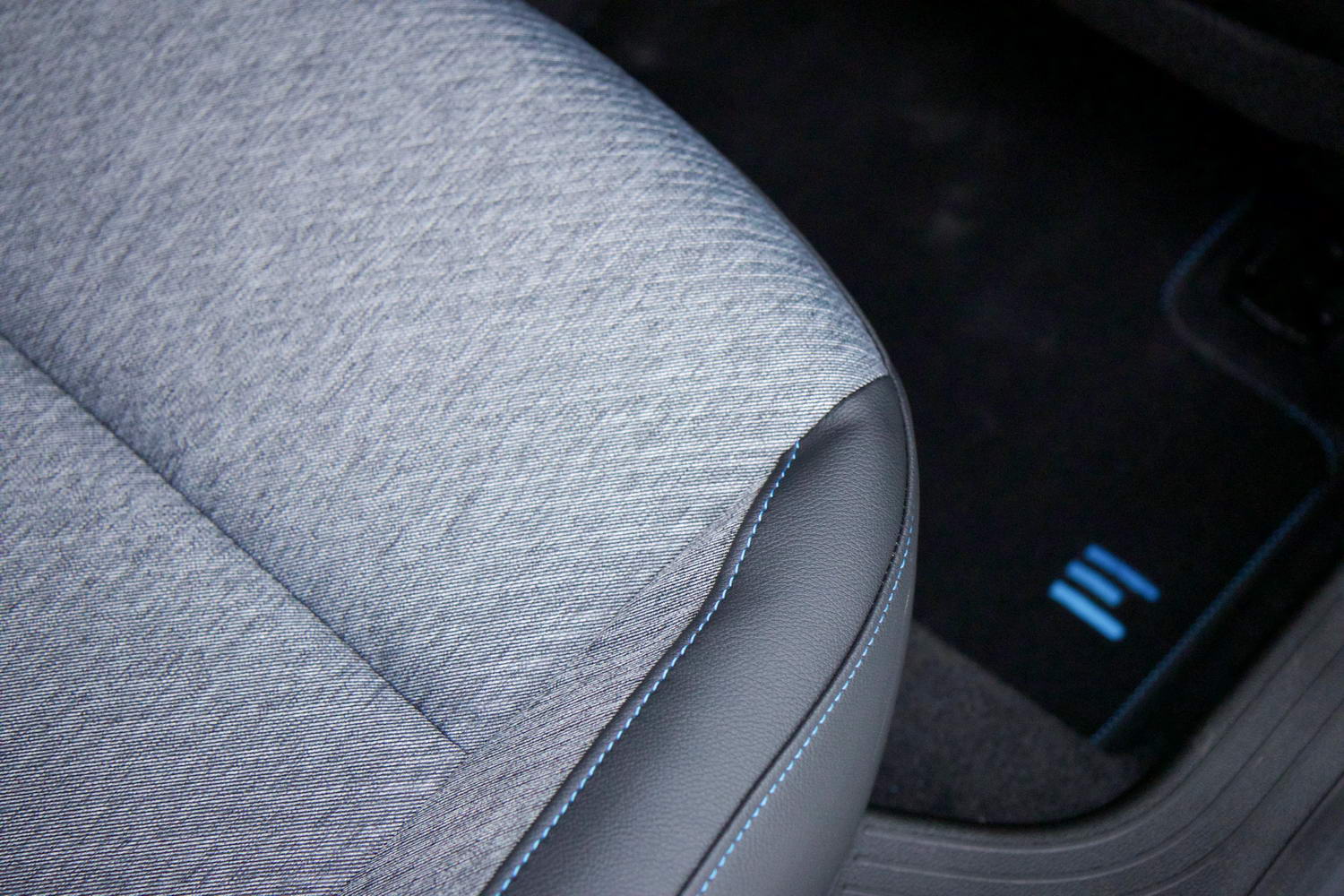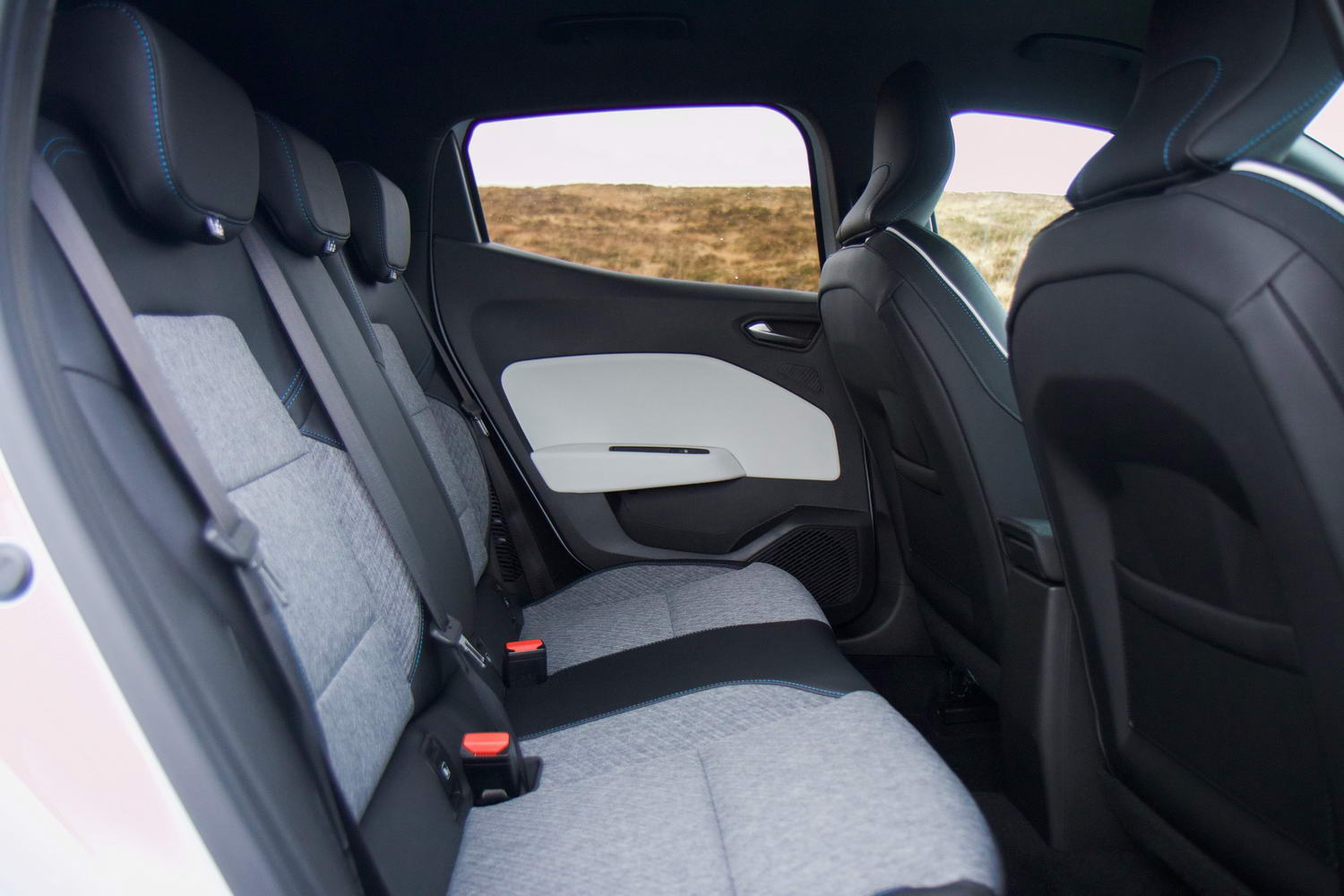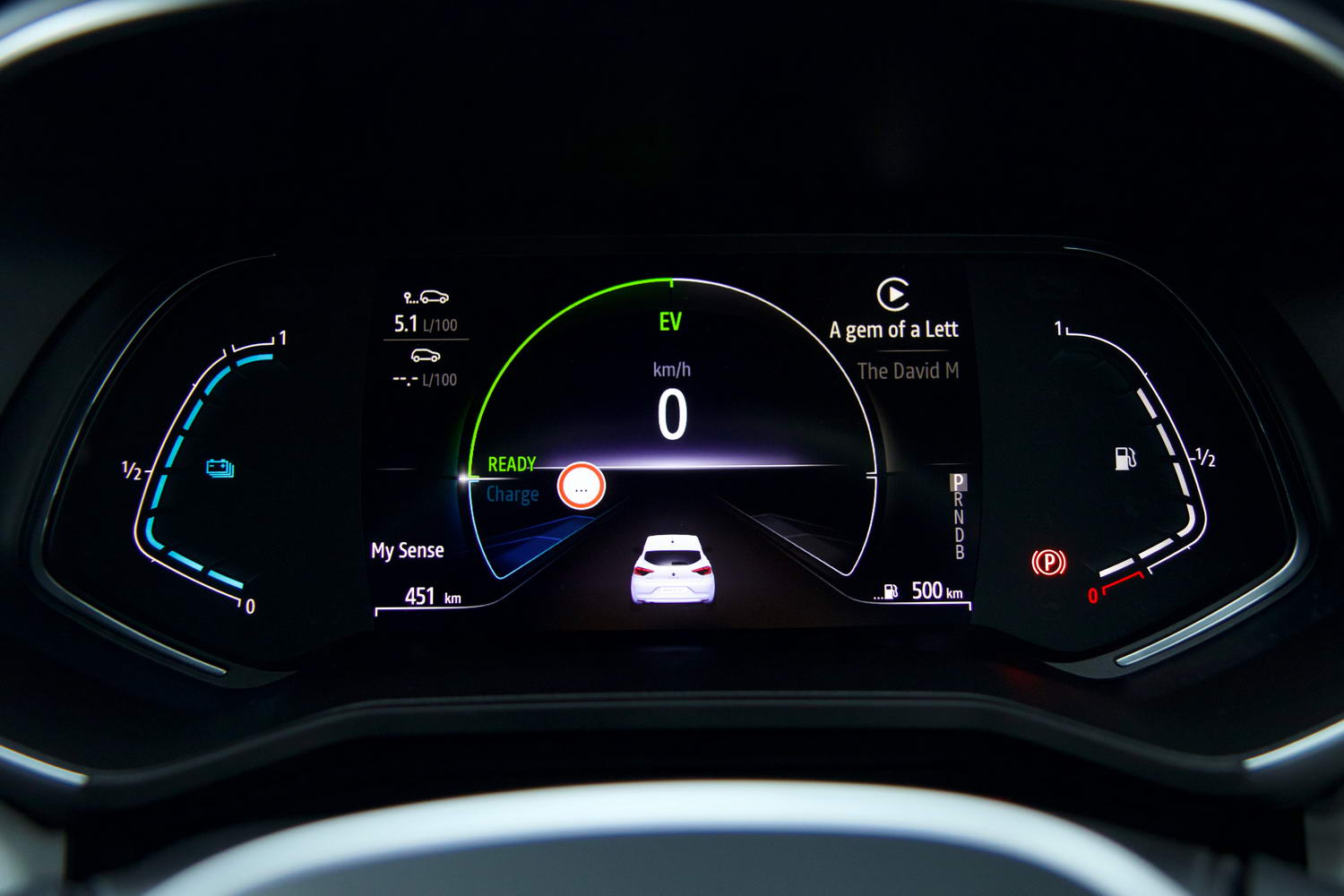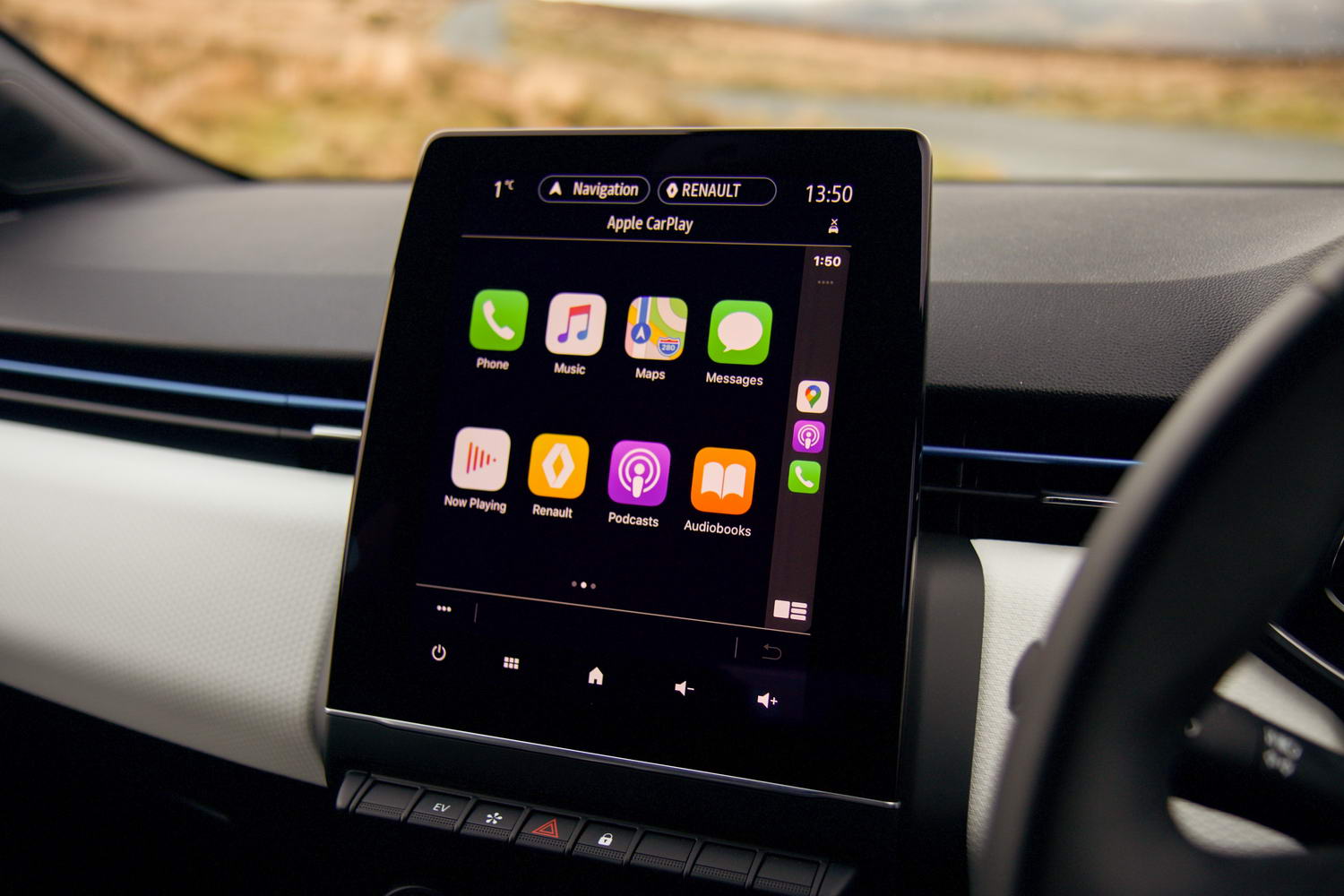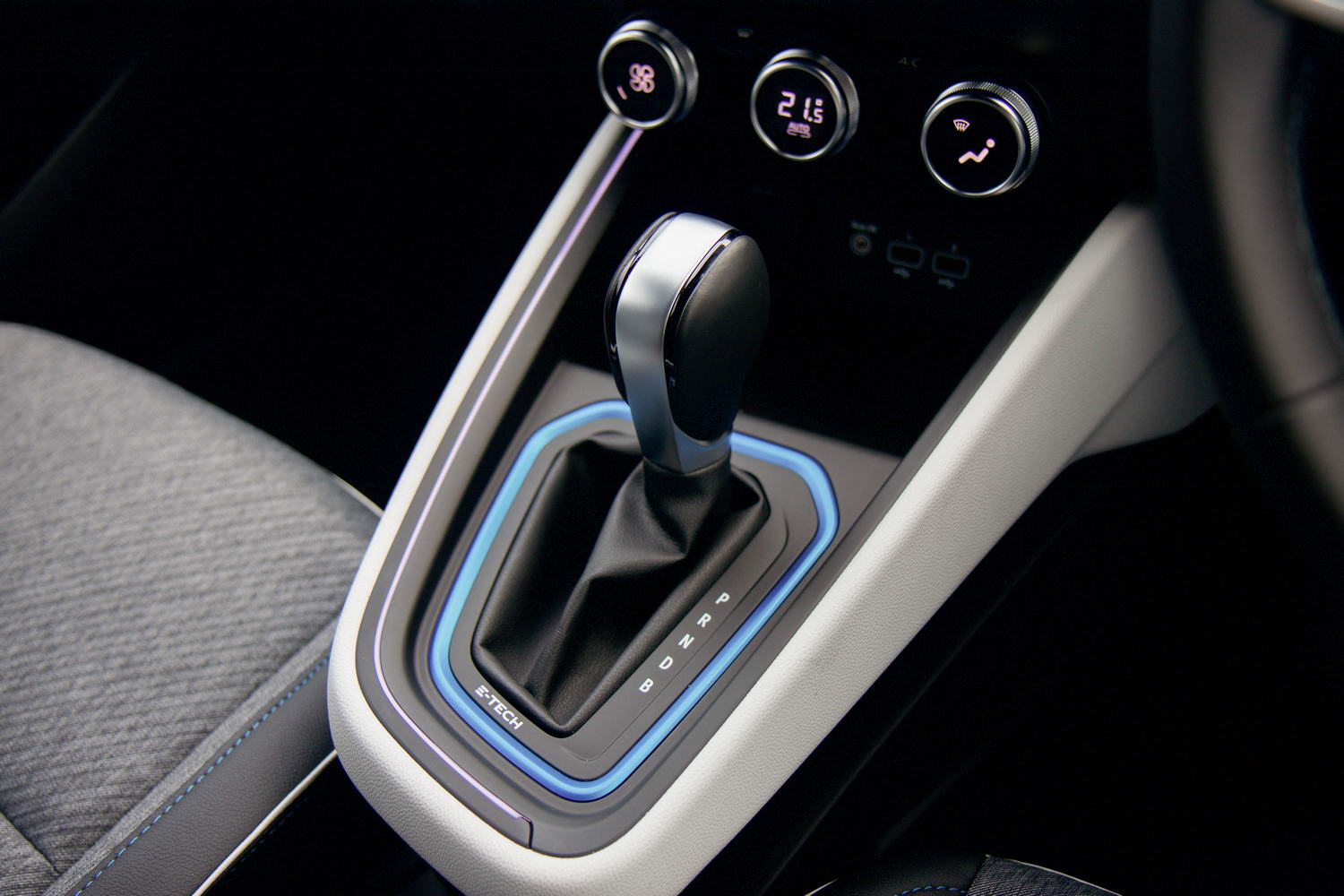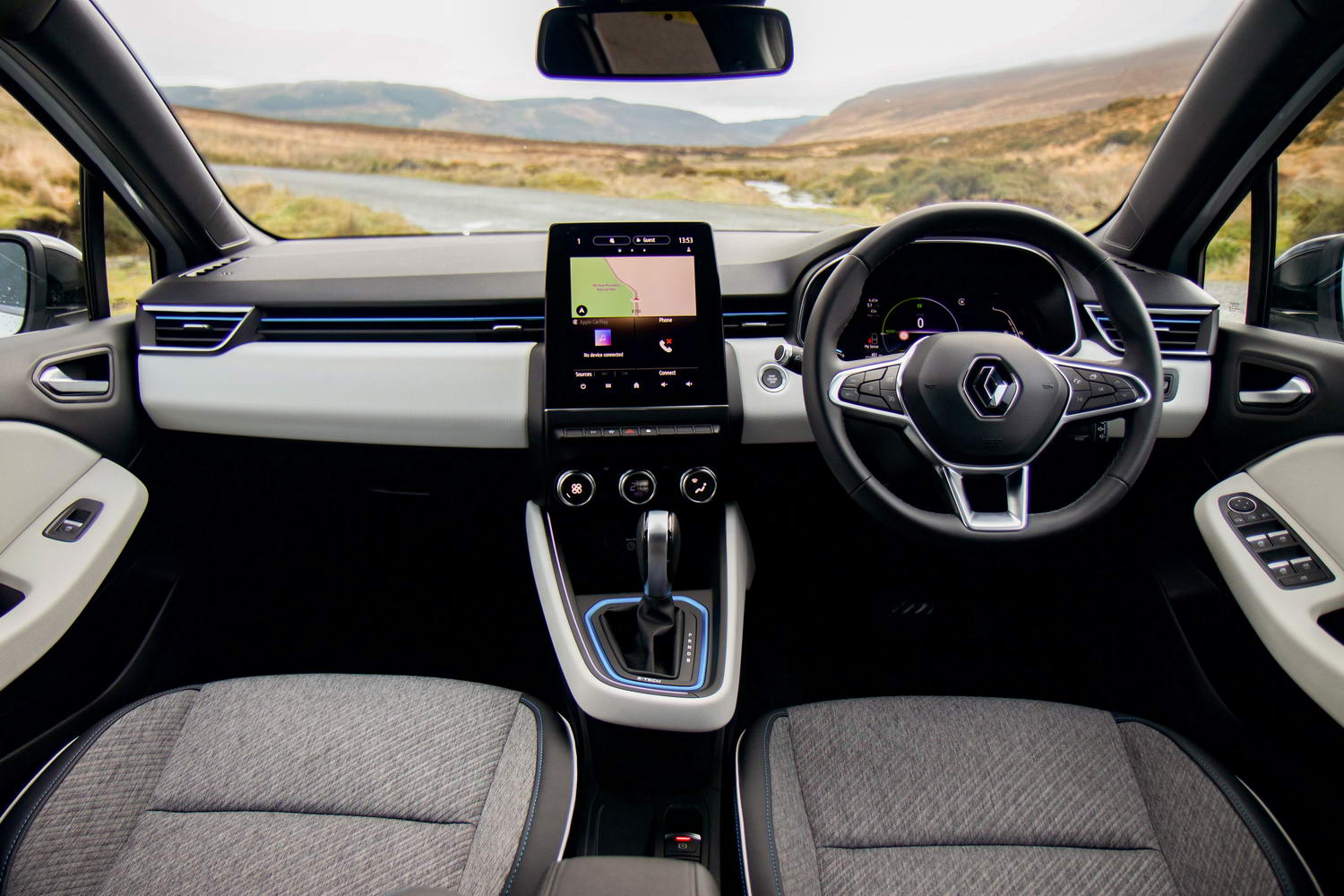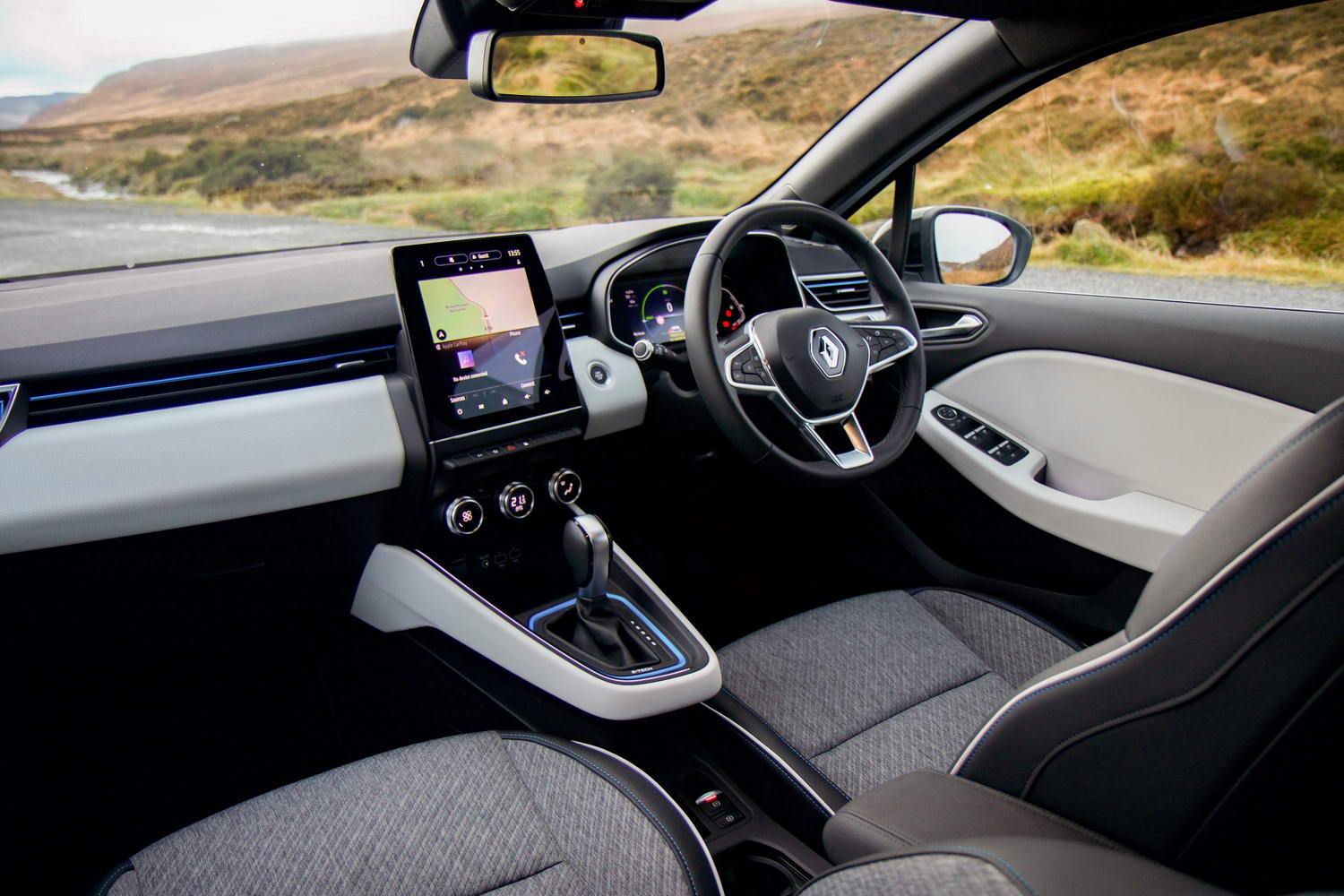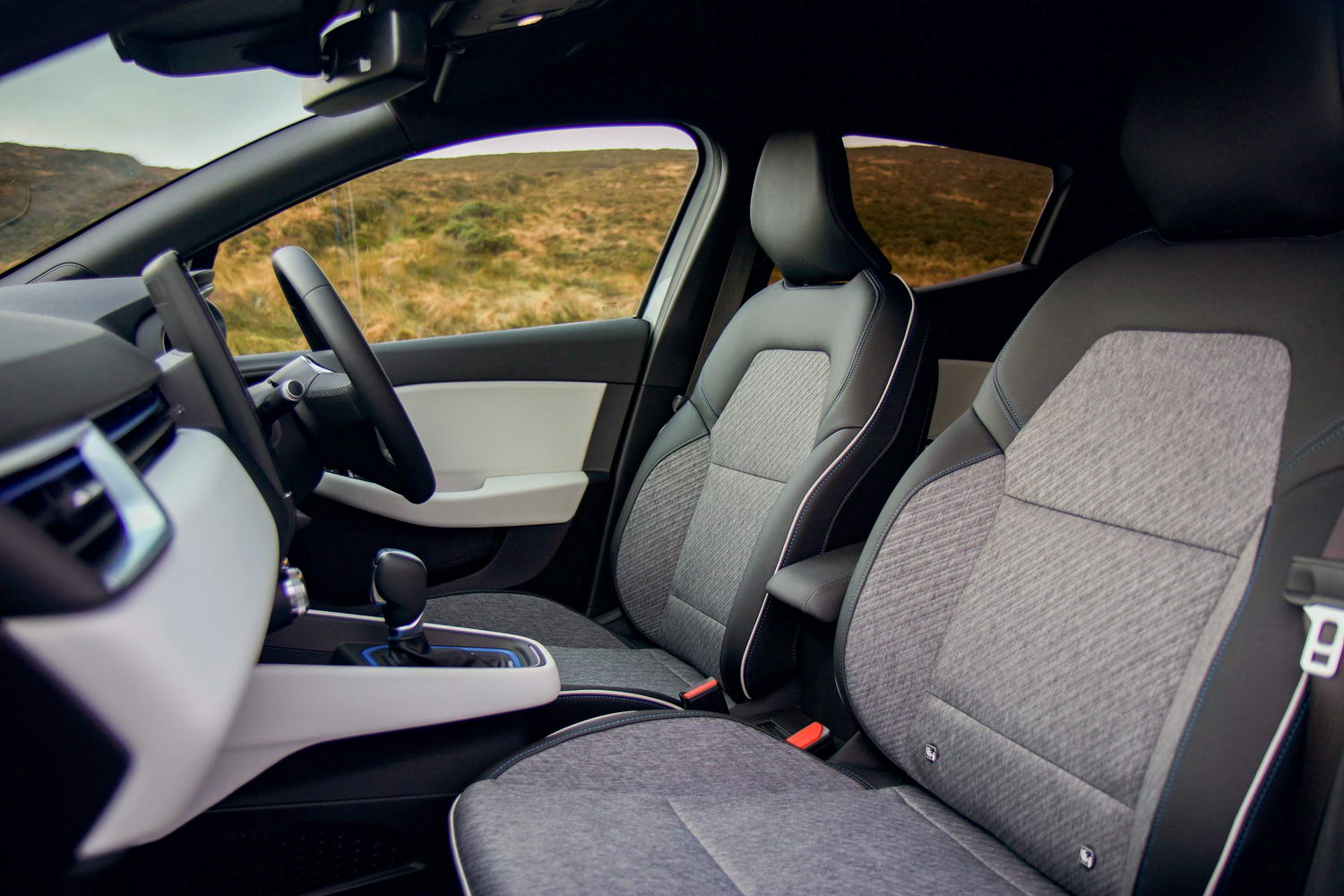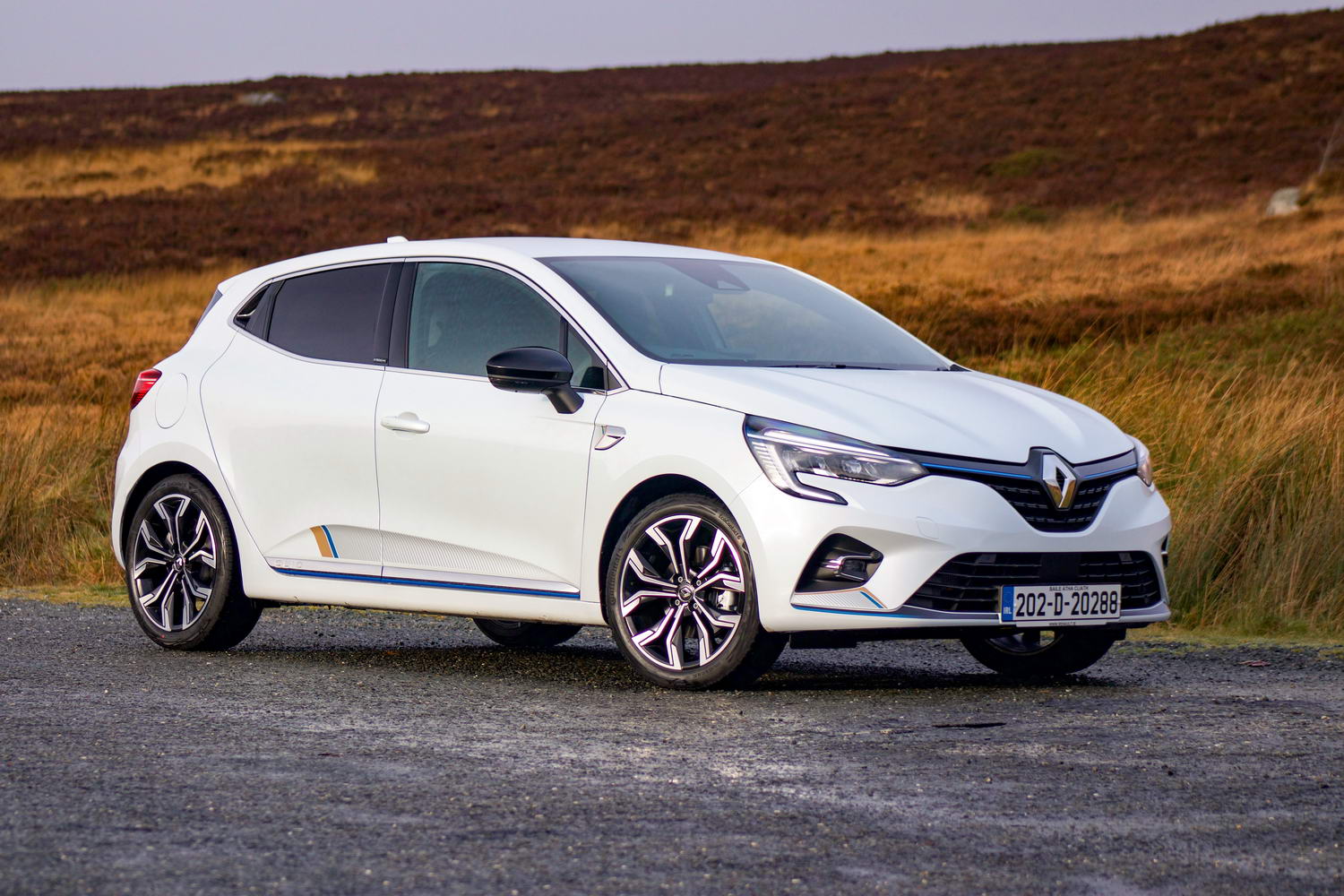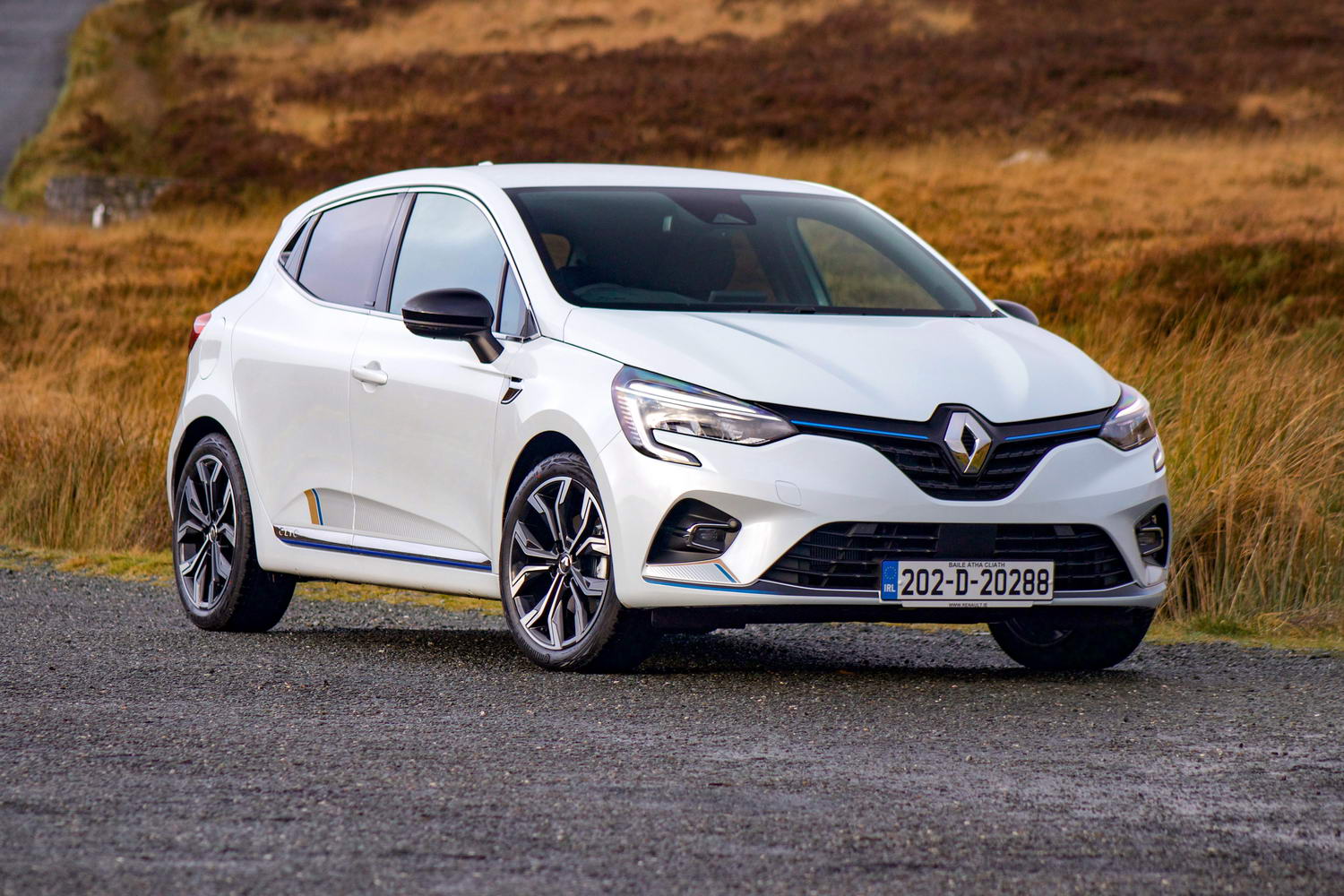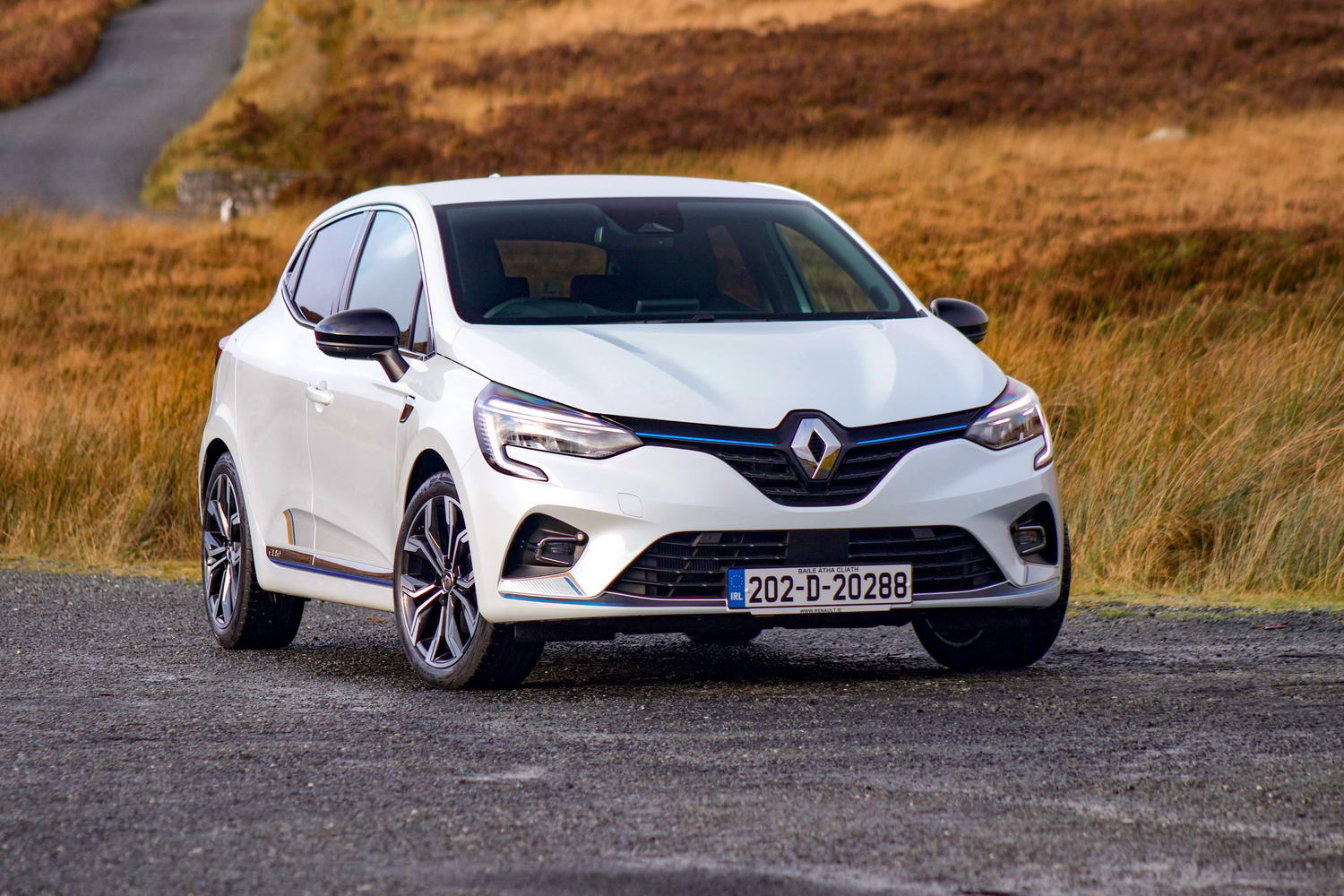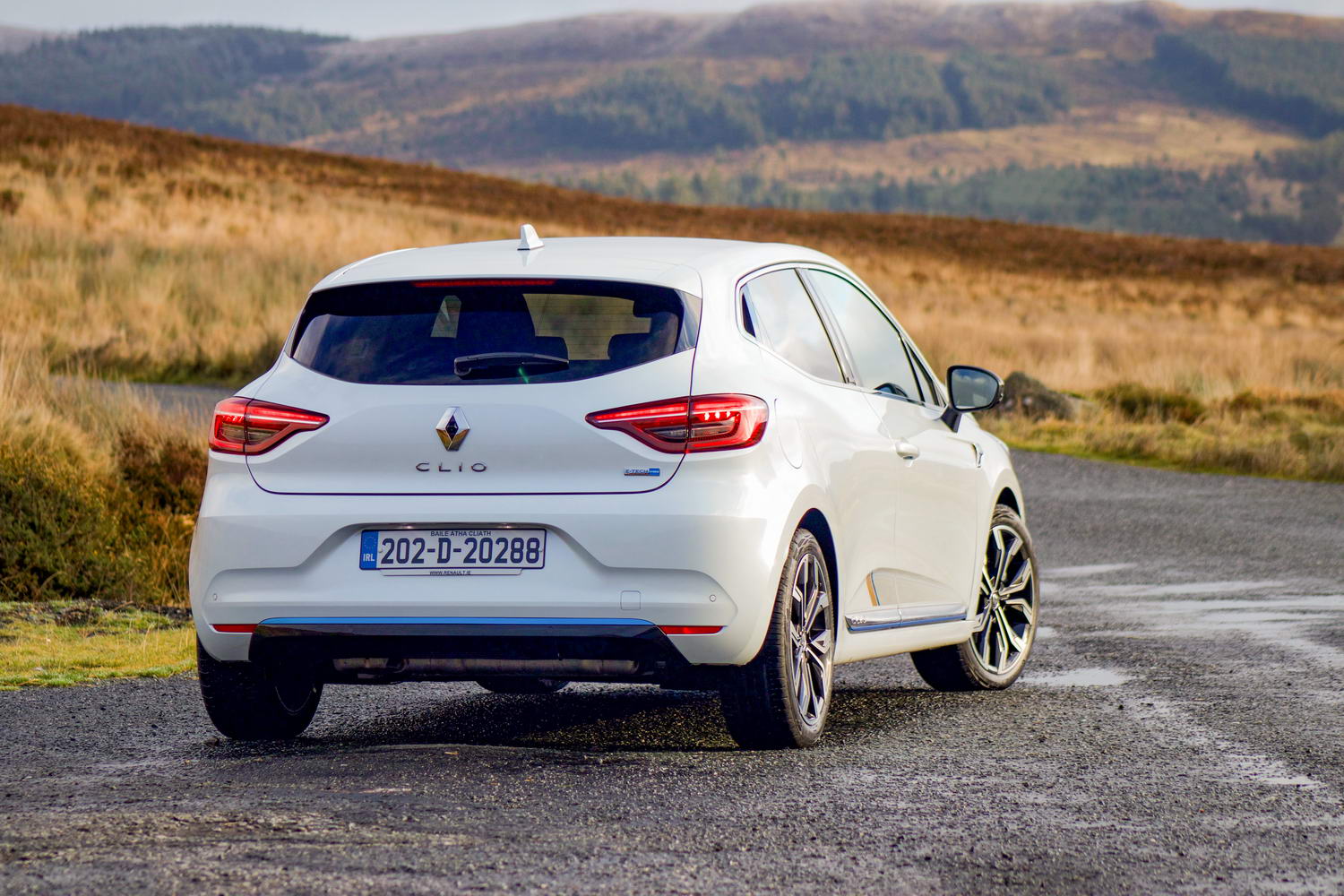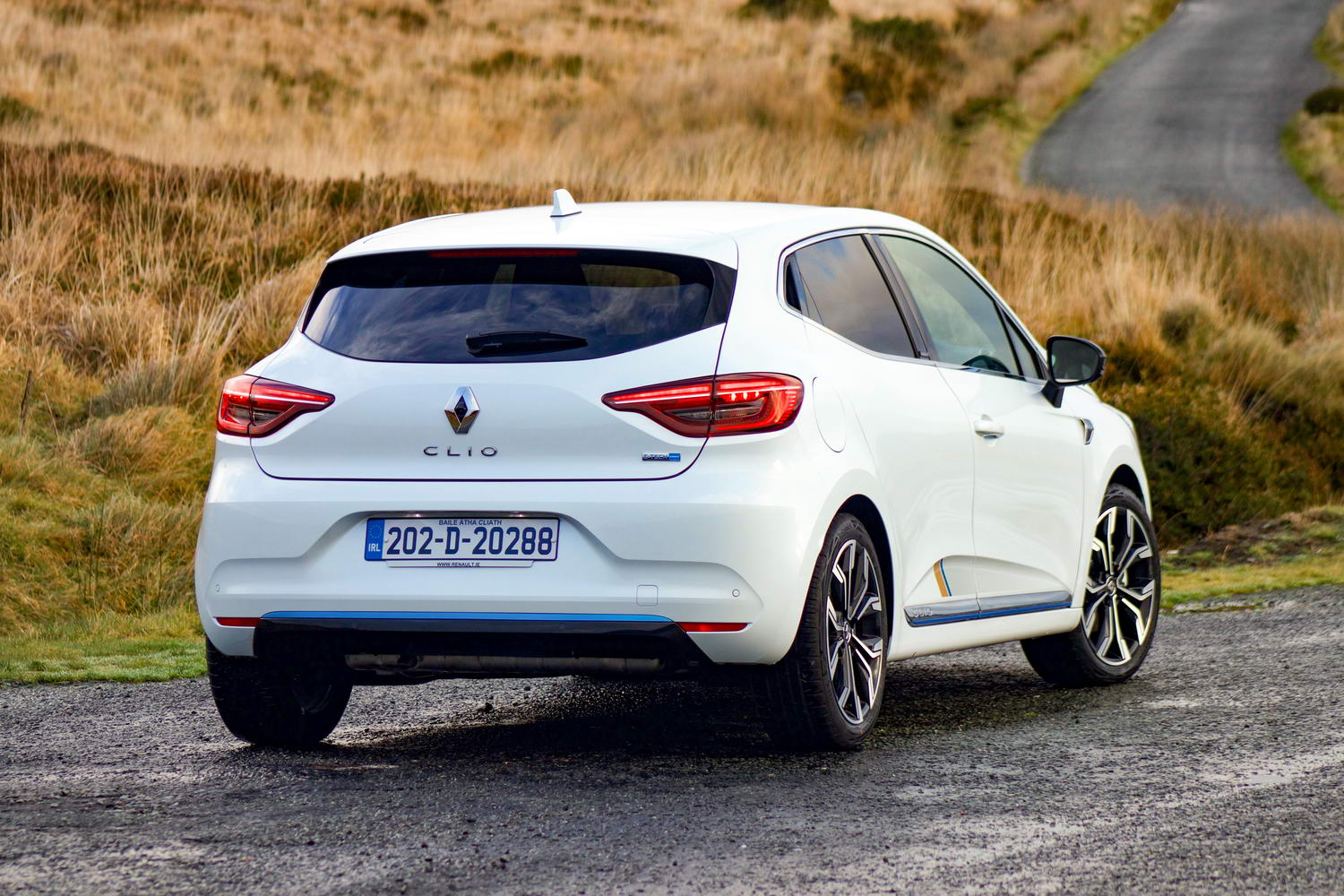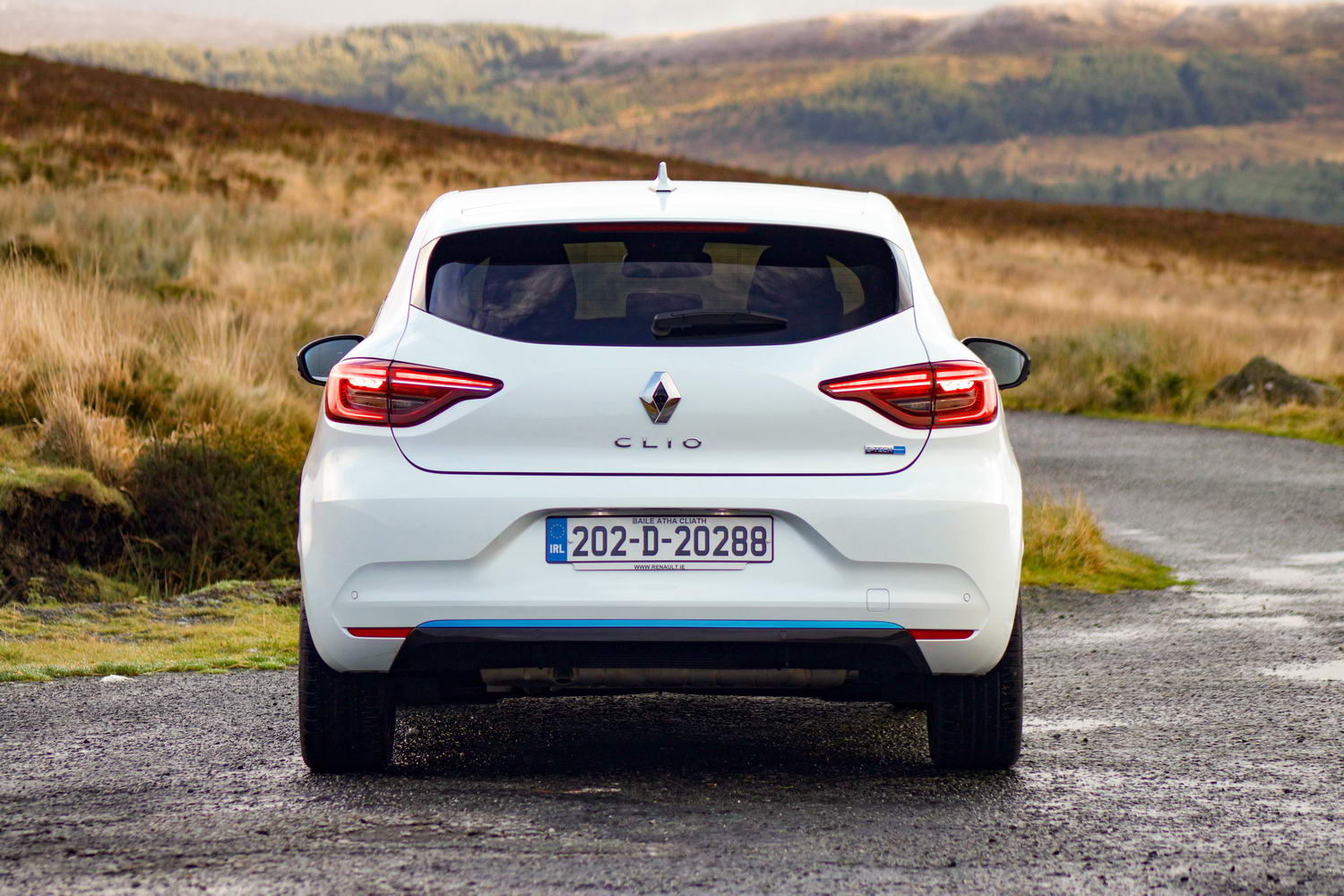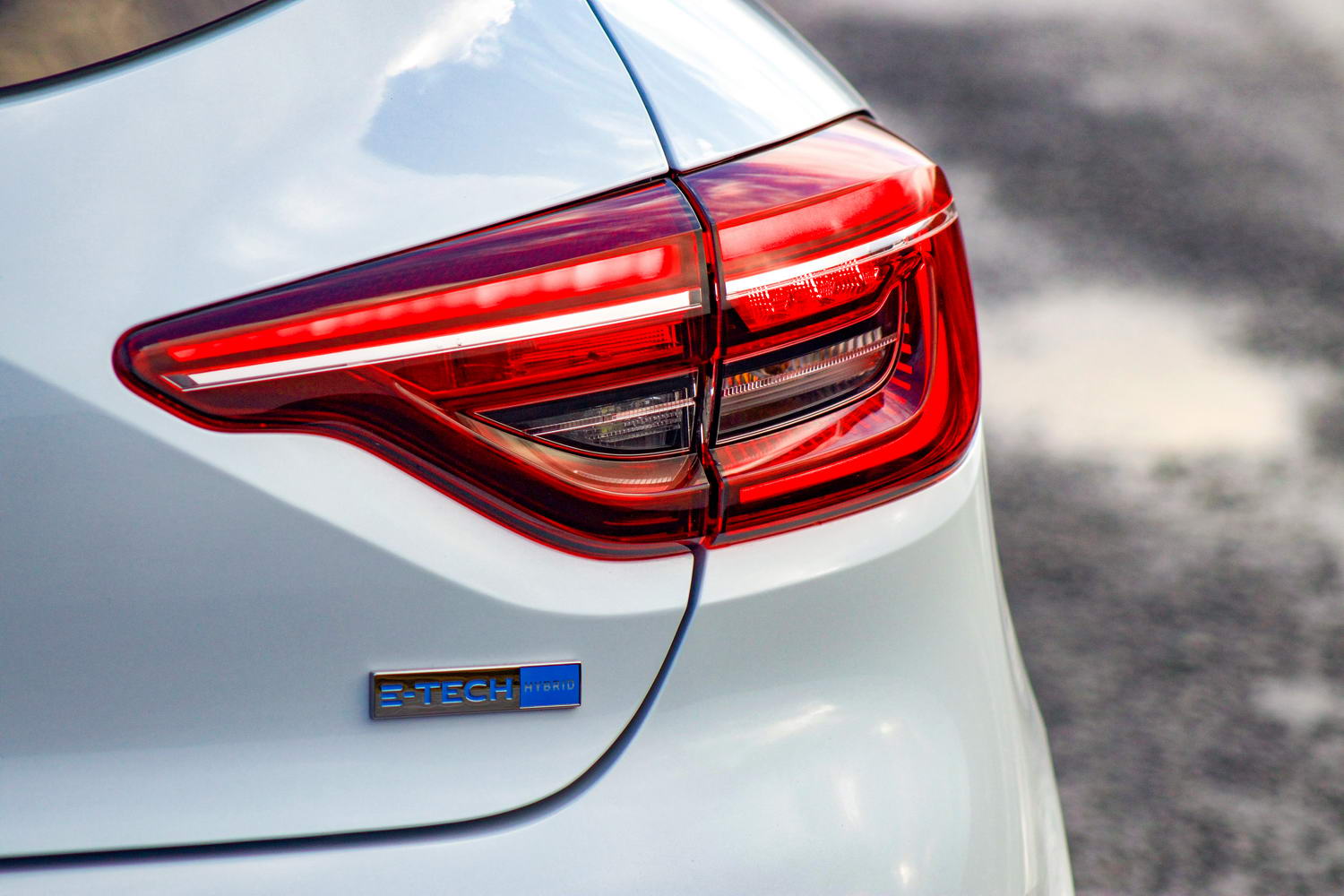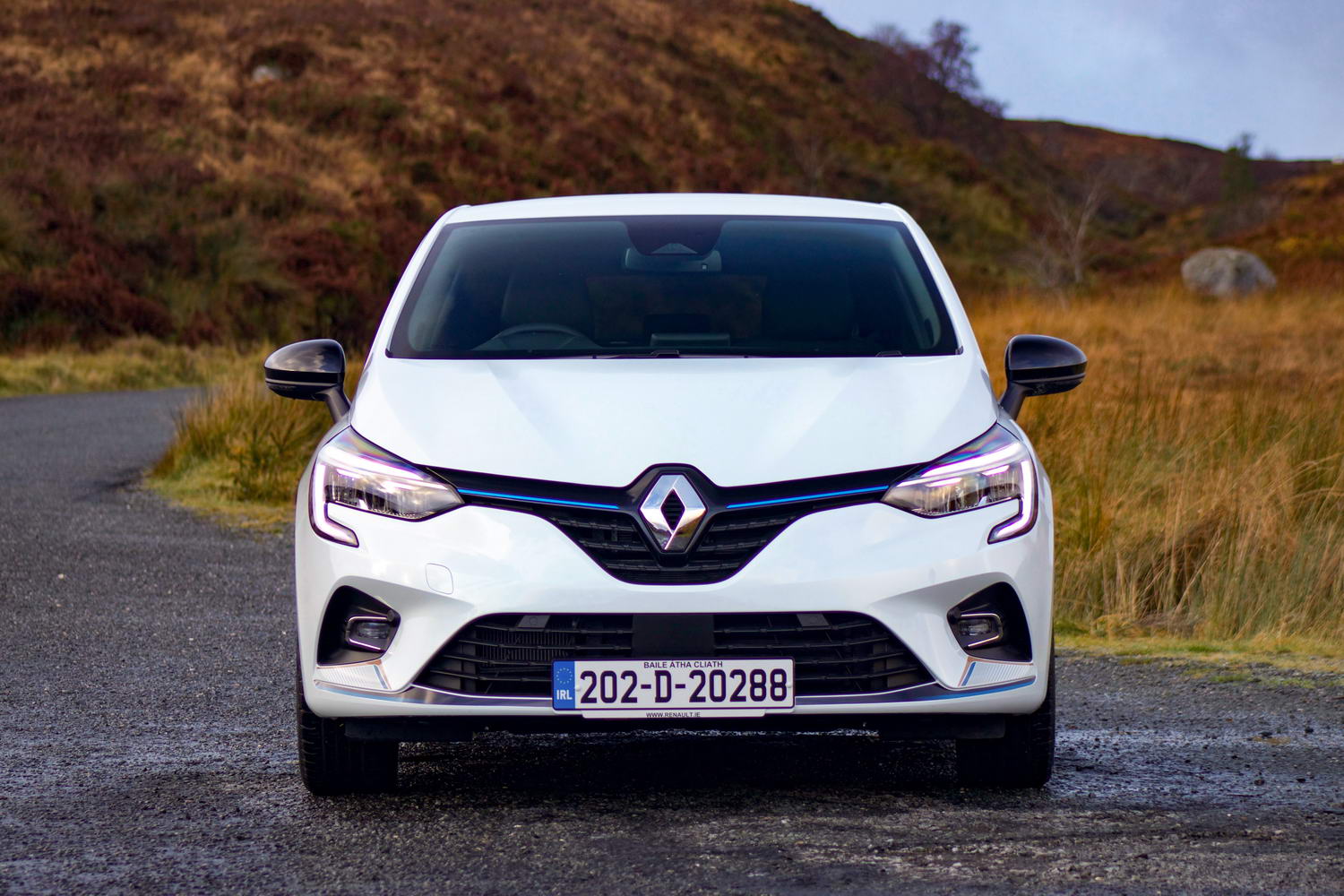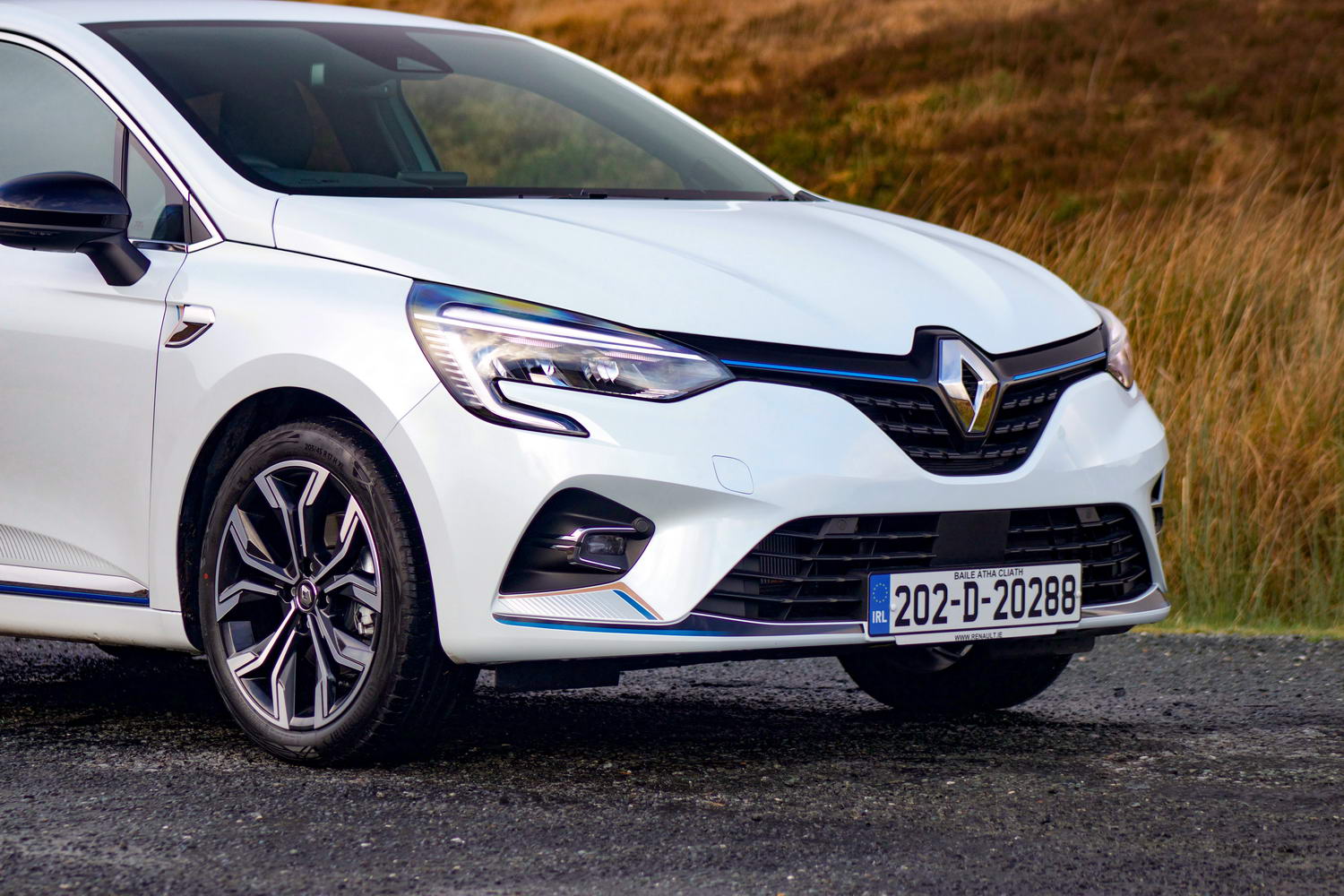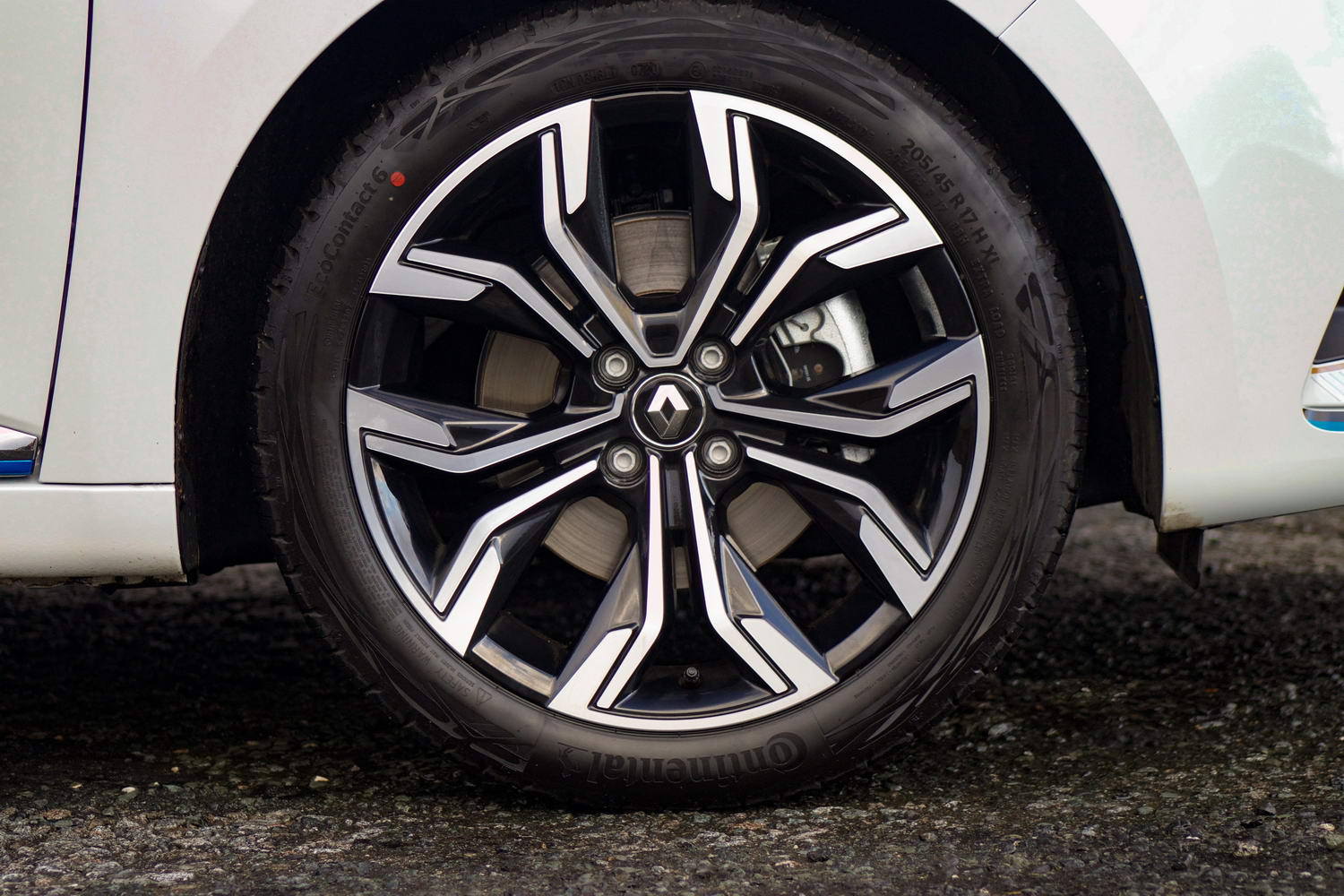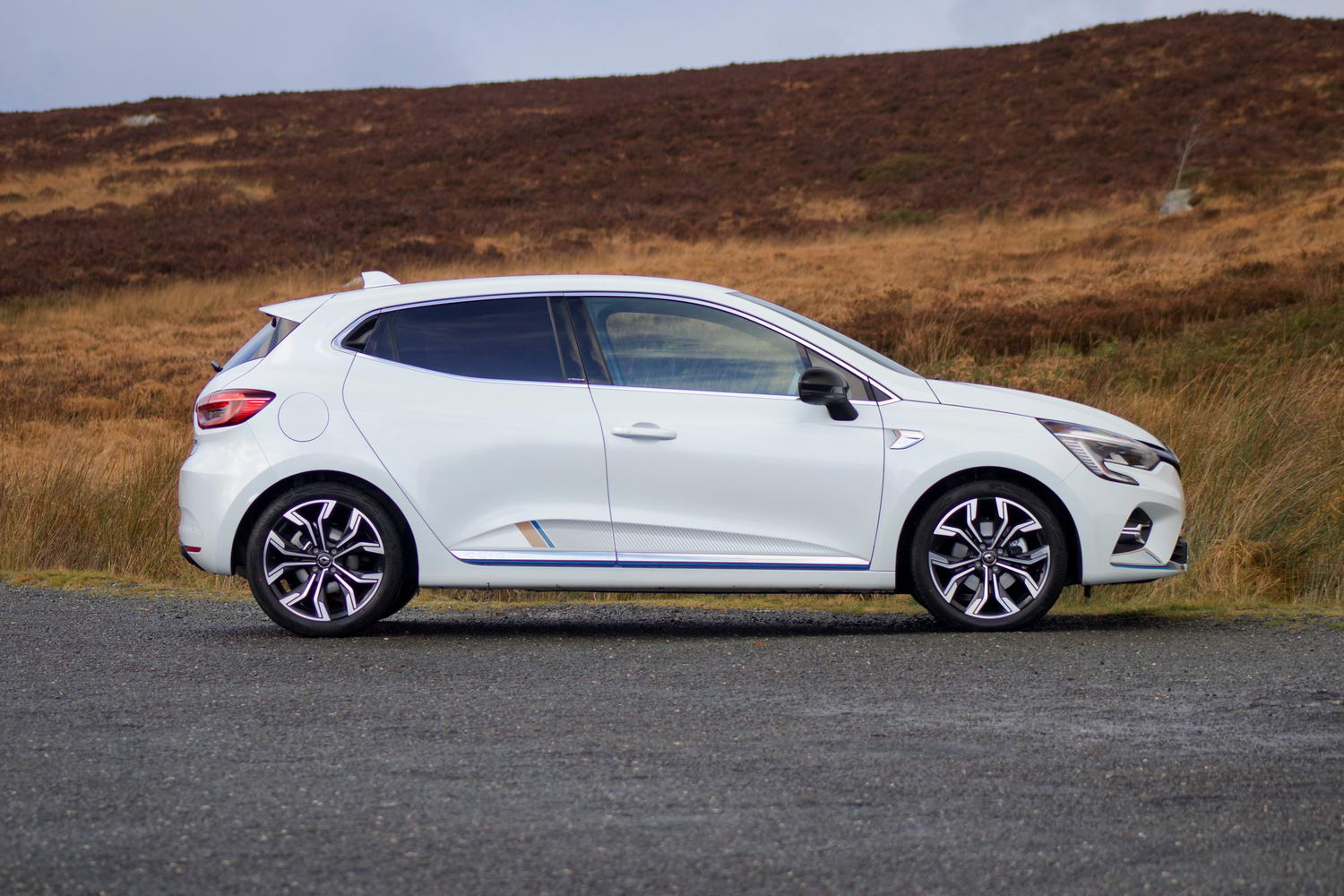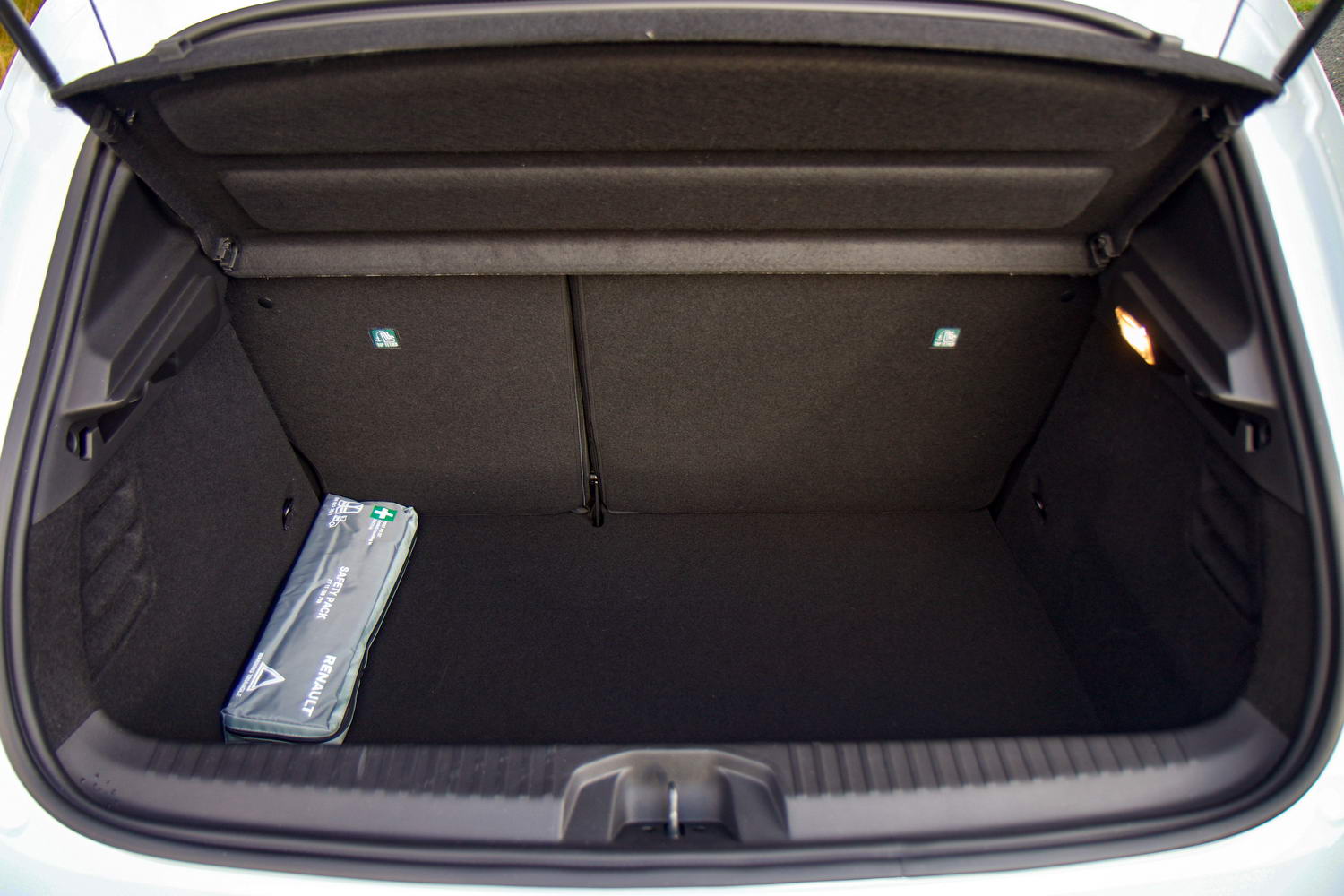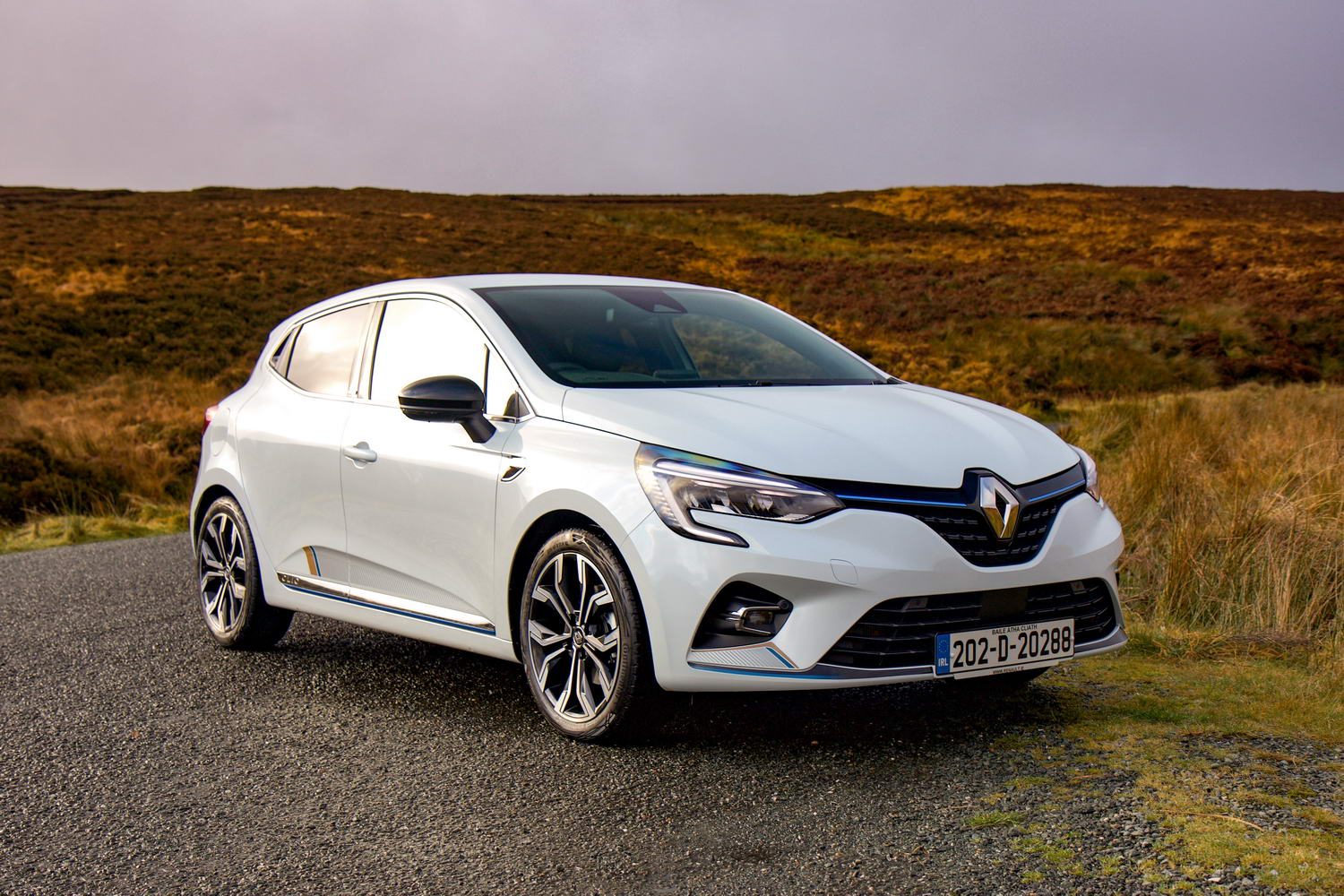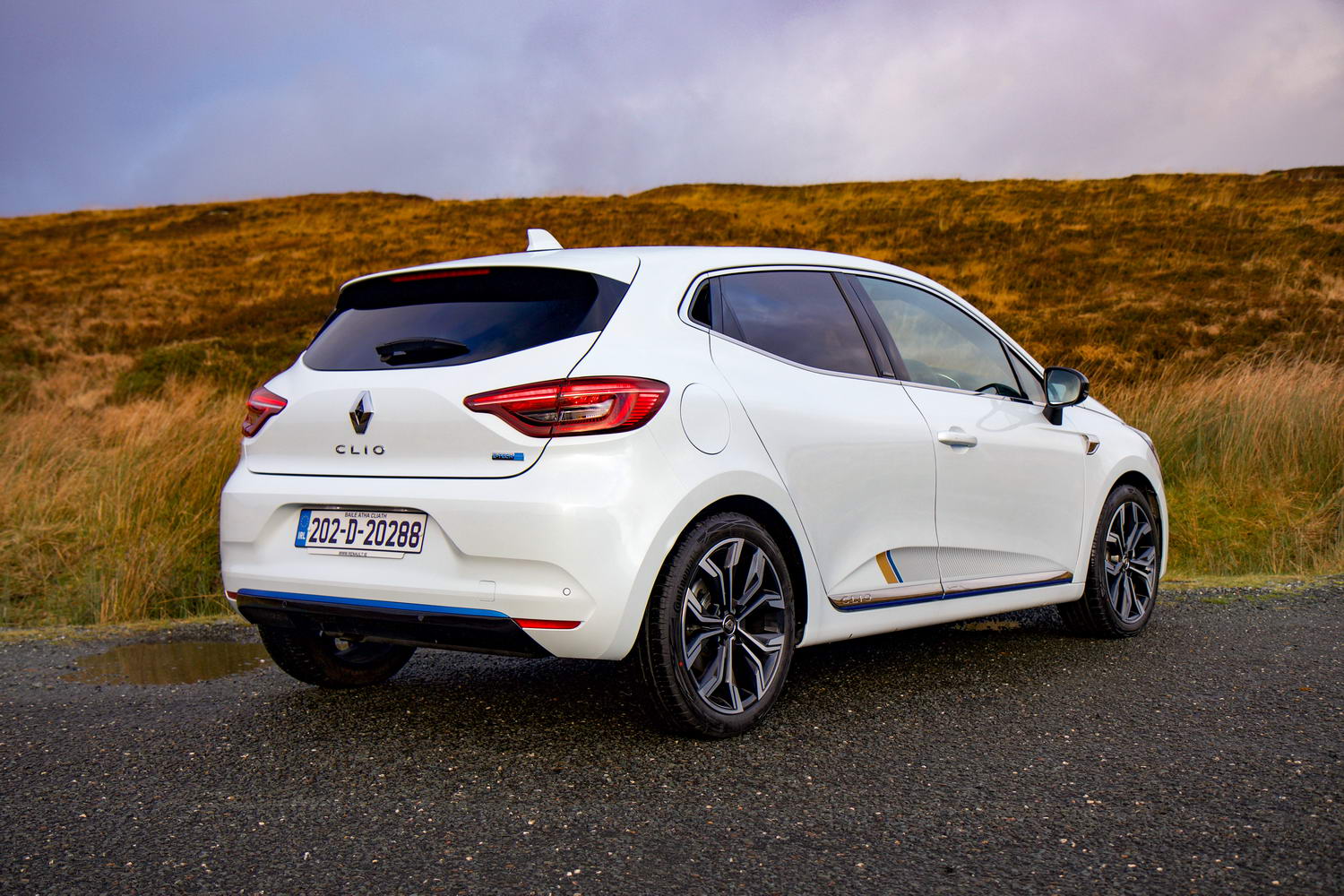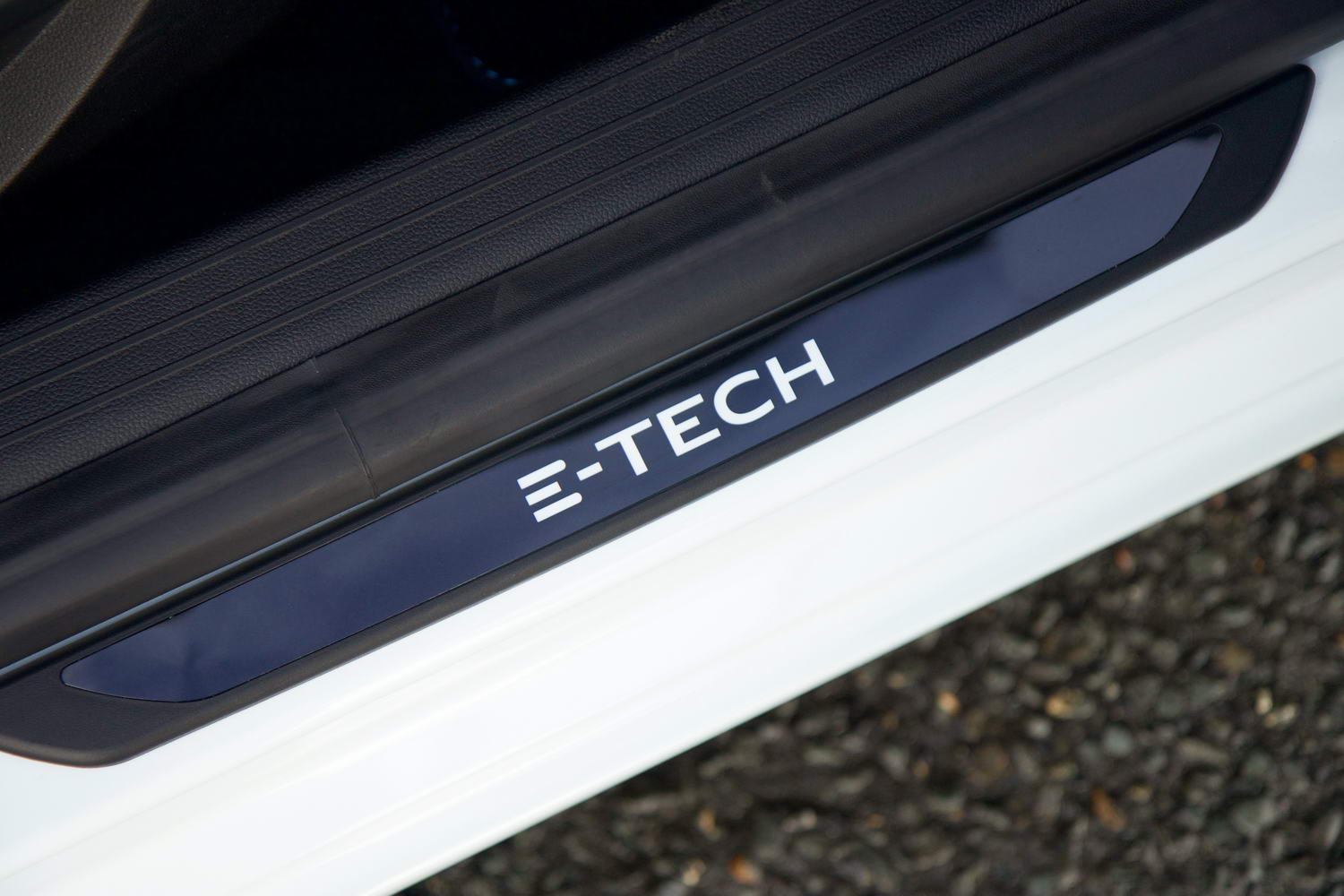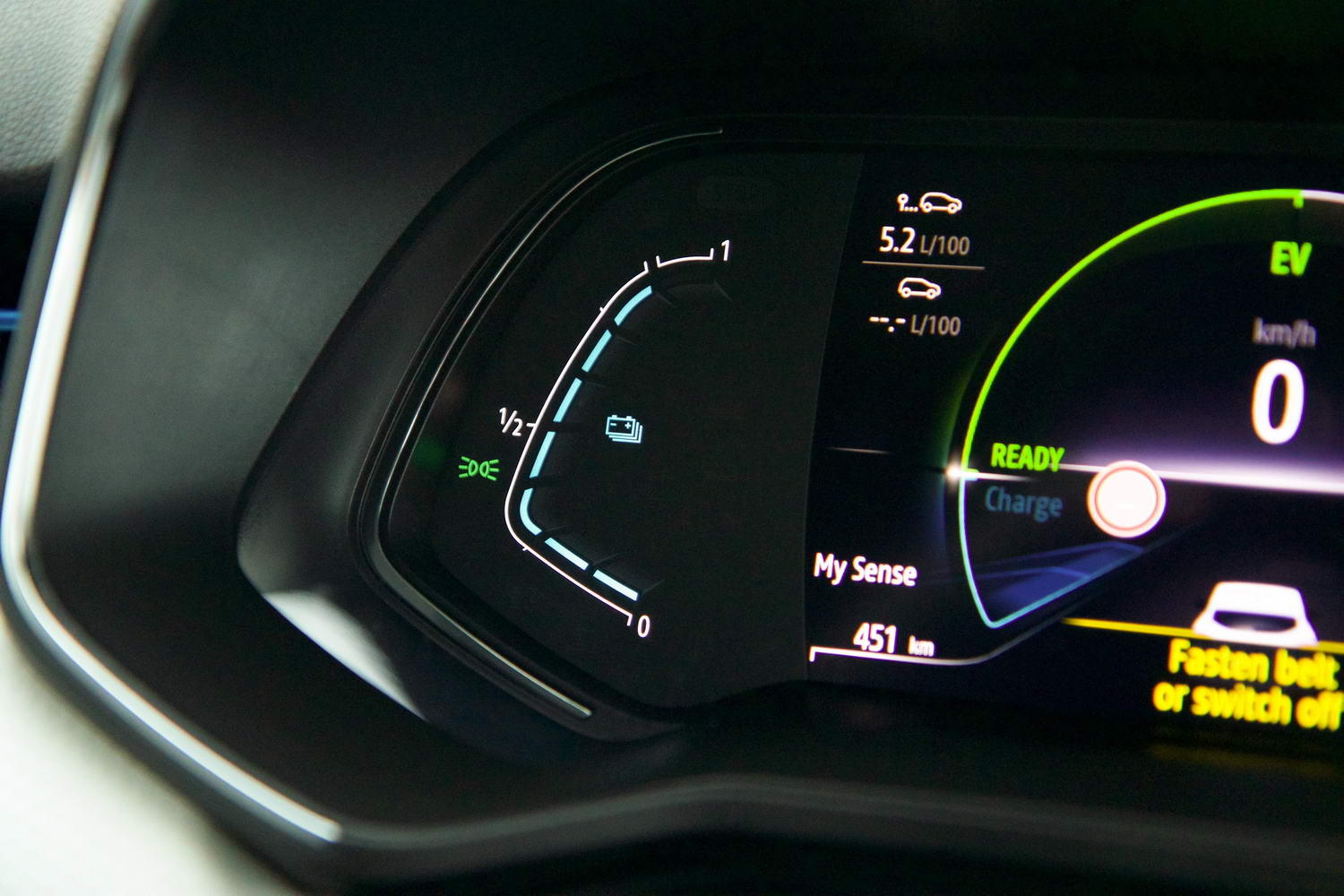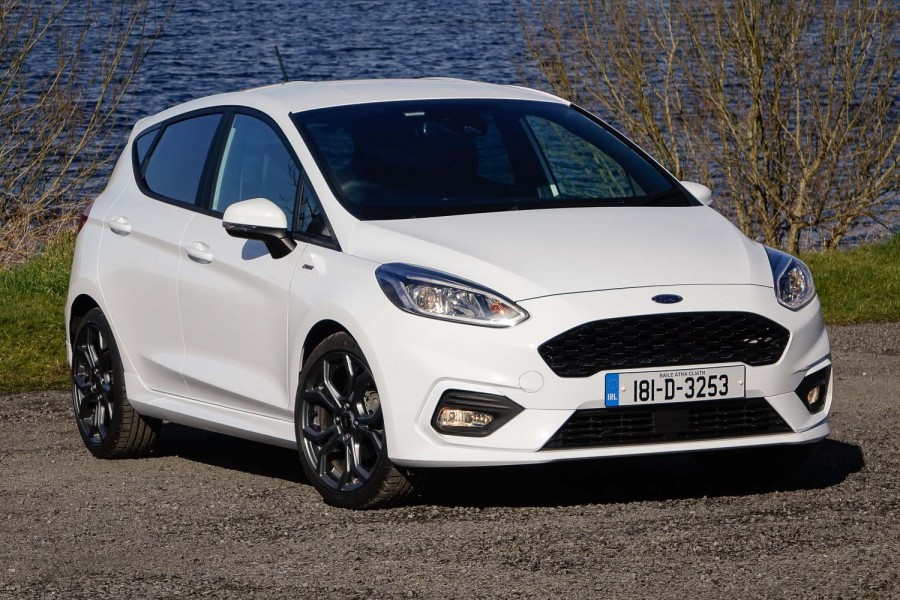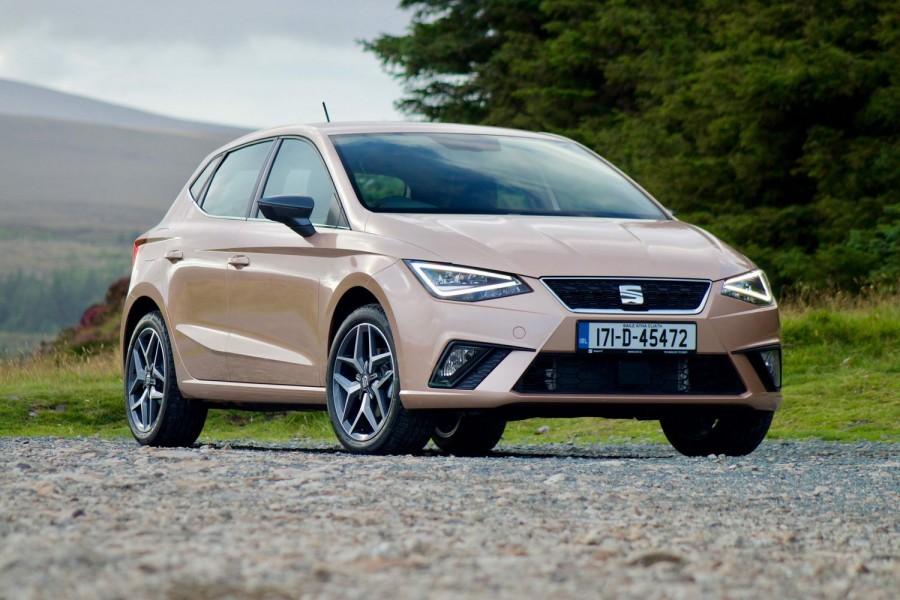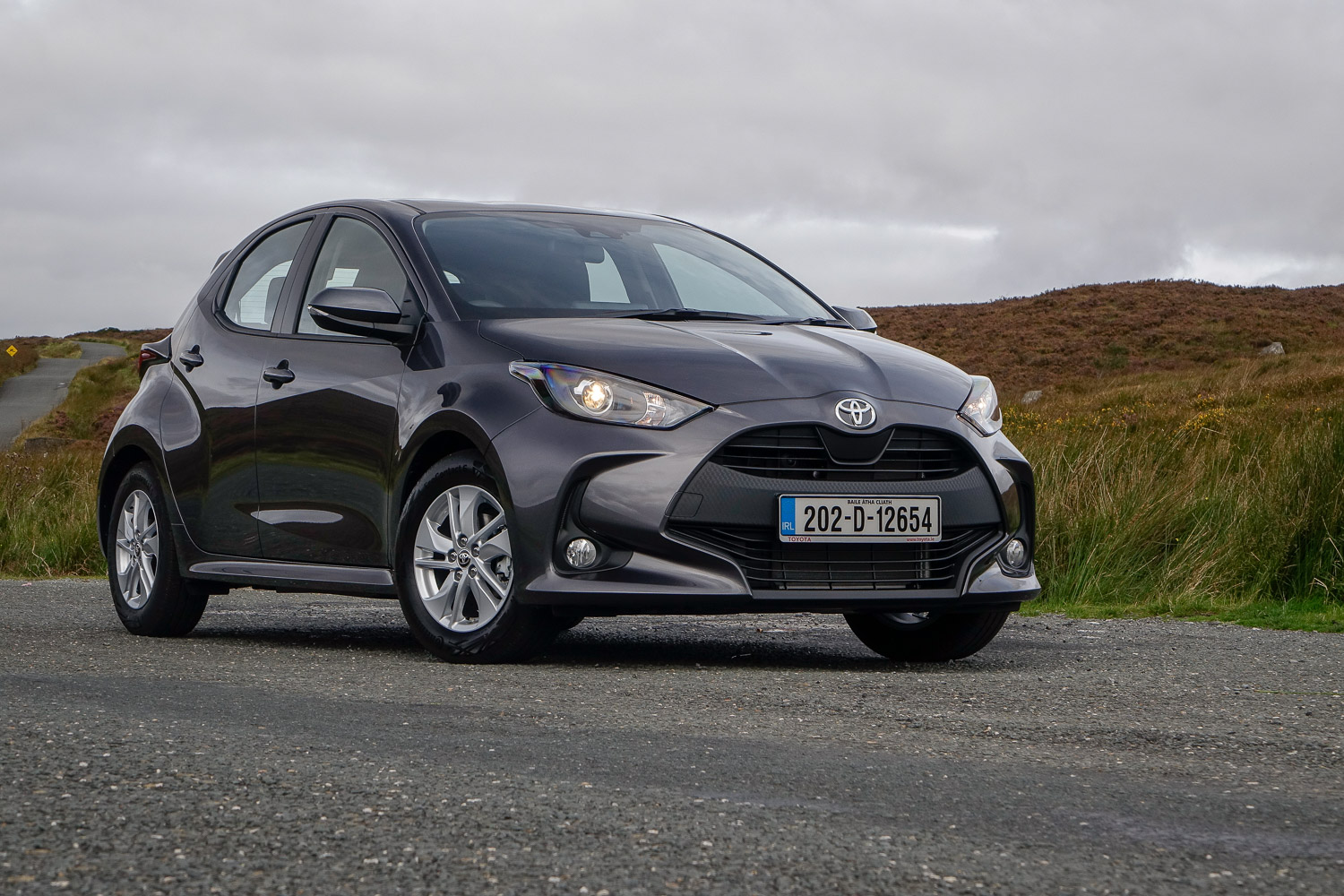What are you driving?
To give it its full name, this is the Renault Clio E-Tech HEV 140 and, as you might have guessed from the subtle blue stripe running through its grille, this is an electrified Clio. More specifically, it's a hybrid, but not a plug-in hybrid, so there's no plugging in or charging involved, making it a favourable proposition for those living in apartments and urban areas where home charging isn't realistic, and for those who aren't keen on diesel.
This generation of Renault Clio came onto the scene in 2020, but 2021 is the first year that its new electrified models - referred to as E-Tech - have become available. It uses a new powertrain that has been developed with electrification in mind, comprising of a 1.6-litre four-cylinder petrol engine and two electric motors, to deliver a combined 140hp, yet has emissions of only 99g/km, making this both the most powerful (as there is no Renault Sport Clio on the horizon) and the lowest emissions Clio in the range.
Name its best bits
As we have mentioned in our other reviews of this generation of Renault Clio, the car has brought improvements in almost every aspect from the interior quality to how it drives. Continuing that is the hybrid 'E-Tech' powertrain, which works very well for such a car. The hybrid battery is small enough at 1.2kWh, but the car makes good use of it. During urban driving, in particular, it tends to use its electric power with pleasing frequency. In the rare chance that you get the battery fully charged, as I did during a long downhill drive, there is enough to provide energy for around two kilometres of pure electric driving, which is average for a hybrid such as this.
Where the Clio excels is how it deploys its power, and the smoothness and refinement when it does. The 1.6-litre petrol engine is accompanied by two electric motors, the larger of which helps move the car. Simultaneously, the smaller one acts as an alternator and starter, and helps with gear changes as this Clio uses an automatic gearbox that doesn't have a clutch. That may all sound complex, and it is, but the result is an impressively smooth operation.
The hybrid system is continually switching between the petrol engine and electric motor. In almost all circumstances, unless you're watching for the EV symbol to appear on the seven-inch digital instrument display, you're unlikely to know which element of that powertrain is at work. Furthermore, its ability to switch into the EV mode even at motorway cruising speeds, and do so unnoticed, copper-fastens its case as a terrific fuel-efficient supermini. The ride quality is pretty decent, as well, and it manages well over broken tarmac. Even with 17-inch alloy wheels fitted, there isn't a great deal of road noise coming through to the cabin. In traffic, the refinement of the engine and calmness in how it shifts gears makes it a relaxing car to drive.
Powertrain tech aside, the Clio's interior is much nicer than what went before, with better quality materials and a brighter cabin, with flashes of white across the dashboard and in the door cards. The part-leather seats include a grey woven fabric insert that looks and feels great too. Another positive is the 9.3-inch tablet-style touchscreen display, as it's much more responsive than previous versions and looks smart, especially when running its smartphone mirroring software.
Anything that bugs you?
One of the minor annoyances with the Clio is that Renault continues to supply a large and somewhat bulky key card with its cars. It is possible to open the car and start it without having to touch the key (and it conveniently locks itself as you walk away), but it is unnecessarily large and leaves you having to carry it around as it doesn't easily slip onto a bunch of keys. A minor grumble, we know, but please Renault, just give us a regular key fob.
And why have you given it this rating?
The slight reduction in running costs, namely through a lower rate of annual motor tax and its ability to prolong the time between petrol station refills, is welcome, but the Clio E-Tech hybrid still comes at a price premium that may deter some buyers from making this the obvious choice. This factor is especially true when you consider that the high-spec E-Tech Special Edition costs almost €2,000 more than the excellent (and fully electric) Renault Zoe. That may be comparing apples and oranges, but the hybrid still looks pricey even against the economical diesel Clio. Over a week of very mixed driving, including motorway journeys, the Clio averaged 5.4 litres/100km, slightly above what Renault quotes as a combined WLTP fuel consumption figure. More time at slower urban speeds would likely see that improve over time.

